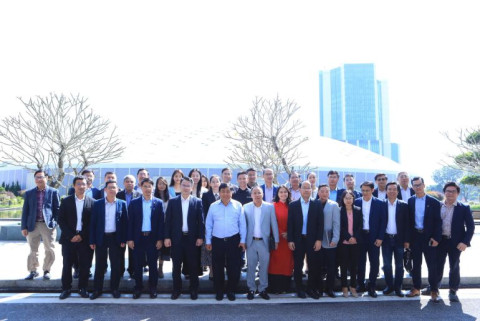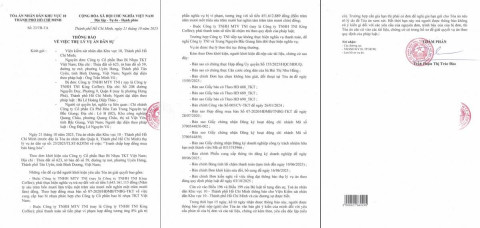Pepper price increase is a great opportunity for export companies
- 130
- Business
- 15:45 16/07/2024
DNHN - Currently, pepper prices on the international market have risen sharply, creating a significant opportunity for export companies. This increase has changed the competitive landscape and spurred the development of the pepper export industry.

One of the main factors leading to the increase in pepper prices is the impact of weather. Unusual rains, droughts, and climate change have negatively affected pepper yield and quality worldwide. The reduction in pepper production and quality has led to a scarcity and price increase of this product in the international market. This creates an opportunity for pepper export companies, especially those countries capable of producing high-quality pepper.
With economic development, the demand for pepper from emerging markets such as China, India, and Southeast Asian countries has increased significantly. The rise in income and the trend of using pepper in local cuisine have created a new opportunity for pepper export companies. Companies can take advantage of this opportunity to expand their export markets and increase sales.
The diversity in pepper products also plays a crucial role in increasing pepper prices and opportunities for export companies. Customers are increasingly concerned about the quality and added value of the products. Export companies can leverage this diversity to offer premium pepper lines, organic pepper, or pepper meeting special quality standards. This helps increase the product's value and expand the potential customer base.
The strength of the USD also has a significant impact on pepper prices in the international market. A stronger USD reduces the value of other currencies and creates added value for export products. This benefits pepper export companies as pepper prices rise.
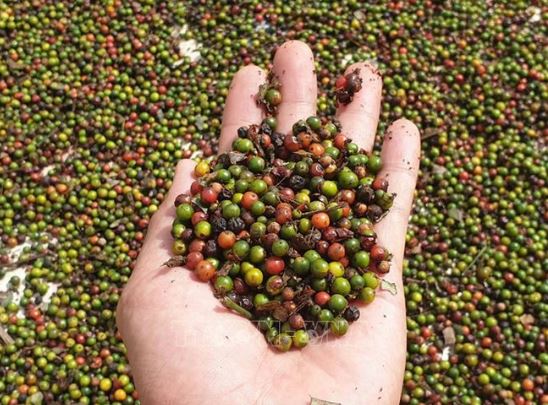
In the first half of 2024, domestic and export pepper prices in Vietnam have seen a strong increase, reaching nearly 153,000 VND/kg, double that of the same period last year. On the international market, the export price of black pepper reached over 4,300 USD/ton and white pepper nearly 6,000 USD/ton, an increase of about 1,000 USD per ton compared to 2023. Despite the high prices, many countries still increase imports of Vietnamese pepper, especially the US, Germany, India, and UAE.
According to information from the Vietnam Pepper and Spice Association (VPSA), the average export price of black pepper in the first six months of 2024 was 4,365 USD/ton and white pepper reached 5,983 USD/ton, an increase of 922 USD and 1,028 USD respectively compared to the same period in 2023.
In Vietnam, pepper prices recorded on July 15 ranged from 150,000 VND to 151,000 VND/kg in the Southeast and Central Highlands provinces. The domestic pepper market has recently experienced strong fluctuations, significantly affecting the profits of producers.
The main reason for the pepper price increase is that Vietnam harvests earlier than competitors like Brazil and India, along with high pepper quality and the impact of the El Niño phenomenon leading to reduced supply.
El Niño and adverse weather conditions have reduced pepper production in major countries like Vietnam, Brazil, and India, leading to a supply shortage and pushing pepper prices up.
According to Ms. Hoang Thi Lien, VPSA President, inventories in major producing countries are decreasing due to increased consumption demand and adverse weather impacts.
"Vietnamese pepper, with top quality, is gaining favor in the international market. With an early harvest and quality products, Vietnamese pepper is asserting its position in meeting market demand, especially in the context of a sharp supply reduction," said Ms. Lien.
Meanwhile, according to the Vietnam Pepper and Spice Association (VPSA), by June 2024, the US was the largest import market with 37,435 tons, up 44.6% compared to the same period last year and accounting for 26.3% of the market share. Germany ranked second with 9,526 tons, up nearly 107%, followed by India with 8,173 tons, up 46%. Importers from the UAE also purchased 8,388 tons, an increase of more than 15% compared to the same period in 2023.
In the first six months of 2024, Vietnam's pepper export volume reached 142,586 tons, up 30.5% compared to the same period, with black pepper accounting for over 88% of total export volume, the rest being white pepper.
On the import side, Vietnam imported a total of 18,002 tons of various types of pepper in the first six months of 2024, including 16,357 tons of black pepper and 1,645 tons of white pepper.
The total import value of pepper reached 69.6 million USD, up 18.9% compared to the same period last year. Brazil, Cambodia, and Indonesia are the three main countries supplying pepper to Vietnam.
Despite the reduction in Vietnam's pepper export volume, the total export value still increased significantly in the first half of 2024 due to the continuous rise in product prices.
Nhat Binh
Related news
#export value
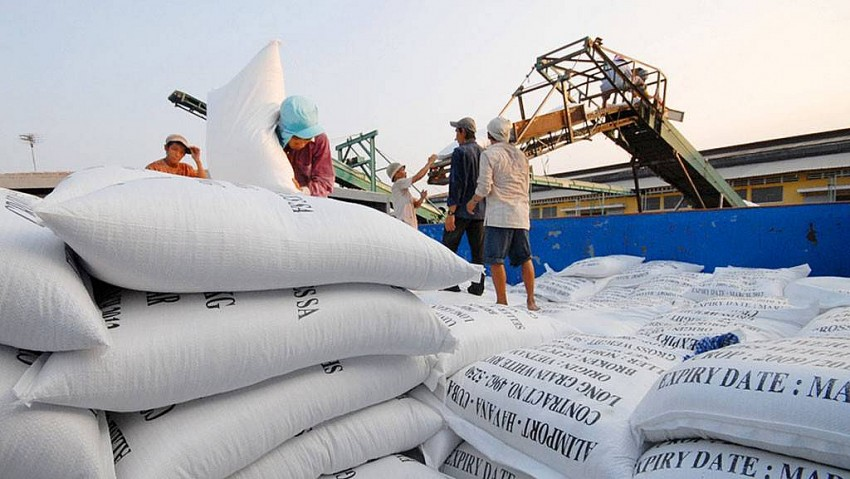
Rice export prices expected to rebound soon due to limited supply
The Vietnam Food Association (VFA) has forecasted that rice exports in 2025 will reach 7.5 million tons. The rice market is currently at its lowest point, but it is anticipated that importers will soon ramp up purchases, driving prices upward.

The wood industry expects export turnover to exceed $16 billion in 2024
This is the assertion of Mr. Ngo Sy Hoai. He expressed confidence that with the improvement of the global economy and market conditions, demand for wood products will be boosted and export turnover will reach over USD 16 billion for the year.
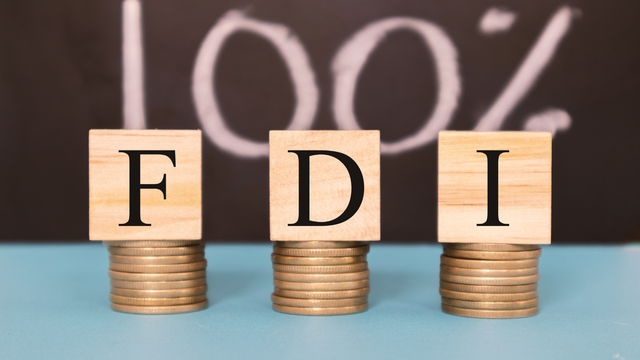
FDI sector makes up 70% of Viet Nam’s total export value
The export value of the foreign direct investment (FDI) enterprises accounts over 70 percent of Viet Nam’s total export value, according to an annual report on Viet Nam’s FDI in 2021 issued by the Viet Nam's Association of Foreign Invested Enterprises on May 10.

Rice exports and unpredictable factors in the second half of 2024
Vietnam is a leading country in rice production and export but is currently facing many challenges in the rice industry in the last months of 2024.
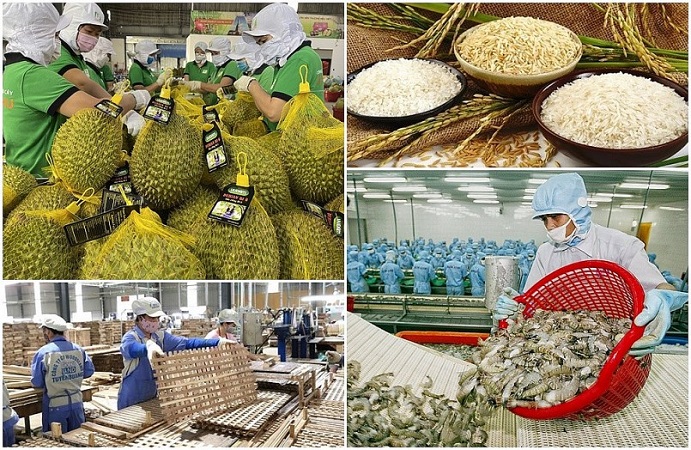
Agricultural exports are forecast to reach nearly 60 billion USD in 2024
Vietnam's agricultural sector is a bright spot with increasing export potential. It is forecast that in 2024, Vietnam could reach an export level of nearly 60 billion USD, opening up great opportunities for sustainable development in this sector.
Đọc thêm Business
From New Year messages of World Leaders to the “new rules” of the Global economy in 2026
At a pivotal moment of transition, New Year messages from capitals such as Hanoi, Beijing, Washington and Paris reflect distinct priorities and strategic visions.
Connecting Leaders, Shaping the Future: Strategic Leadership Planning Meeting – CorporateConnections Hanoi A
"Your network is your most powerful flowing asset. It generates value, multiplies opportunities, and accelerates your influence across borders."
Innovative ESG enterprise: Trạm Xe Việt startup proposes solutions to build a green mobility ecosystem
As Vietnam commits to achieving Net Zero by 2050 and tightens emissions standards, the transportation sector faces unprecedented pressure to transform.
Deputy Prime Minister Nguyễn Chí Dũng: “The country’s major challenges weigh heavily on my mind — and we must resolve them together.
On the morning of November 26, 2025, Deputy Prime Minister Nguyễn Chí Dũng chaired a high-level working session at the National Innovation Center (NIC) in Hòa Lạc.
Unitsky String Technologies signs cooperation agreements with three Vietnamese partners, opening a new direction for smart mobility and sustainable development
The signing ceremony took place in Minsk, Belarus, on November 28, 2025.
Before the D‑day to abolish flat‑rate tax: Fear of technology and costs leave small traders struggling to adapt
From 1 January 2026 the flat‑rate tax regime will be abolished. Small business households will be required to declare tax based on actual revenue. MISA supports the transition with technology to help micro‑merchants adapt smoothly and transparently.
Vietnamese enterprises at a crossroads: the impact of a potential US–China deal
As the world closely monitors every shift in US-China relations, emerging signals of a strategic agreement between the two global powers are raising hopes for global economic stability.
HDBank: Impressive profit growth, leading in profitability and advancing international integration
Ho Chi Minh City Development Joint Stock Commercial Bank (HDBank, stock code HDB) announced its consolidated profit before tax for the first 9 months of 2025 reached VND 14,803 billion, marking a 17% increase year-on-year (YoY).
TNI King Coffee sued for over VND 5 Billion in unpaid debts
On October 21, 2025, the People’s Court of District 10 in Ho Chi Minh City officially accepted a civil lawsuit concerning a commercial contract dispute between TKT Vietnam Plastic Packaging Joint Stock Company and TNI King Coffee Co., Ltd.
VINASME and Jeonnam Technopark Sign MOU on technology cooperation, human resource training, and trade promotion
On October 15, 2025, in Hanoi, VINASME and Jeonnam Technopark (Korea) signed an MOU to promote trade, advance technology transfer, and develop human resources between enterprises of both nations.





